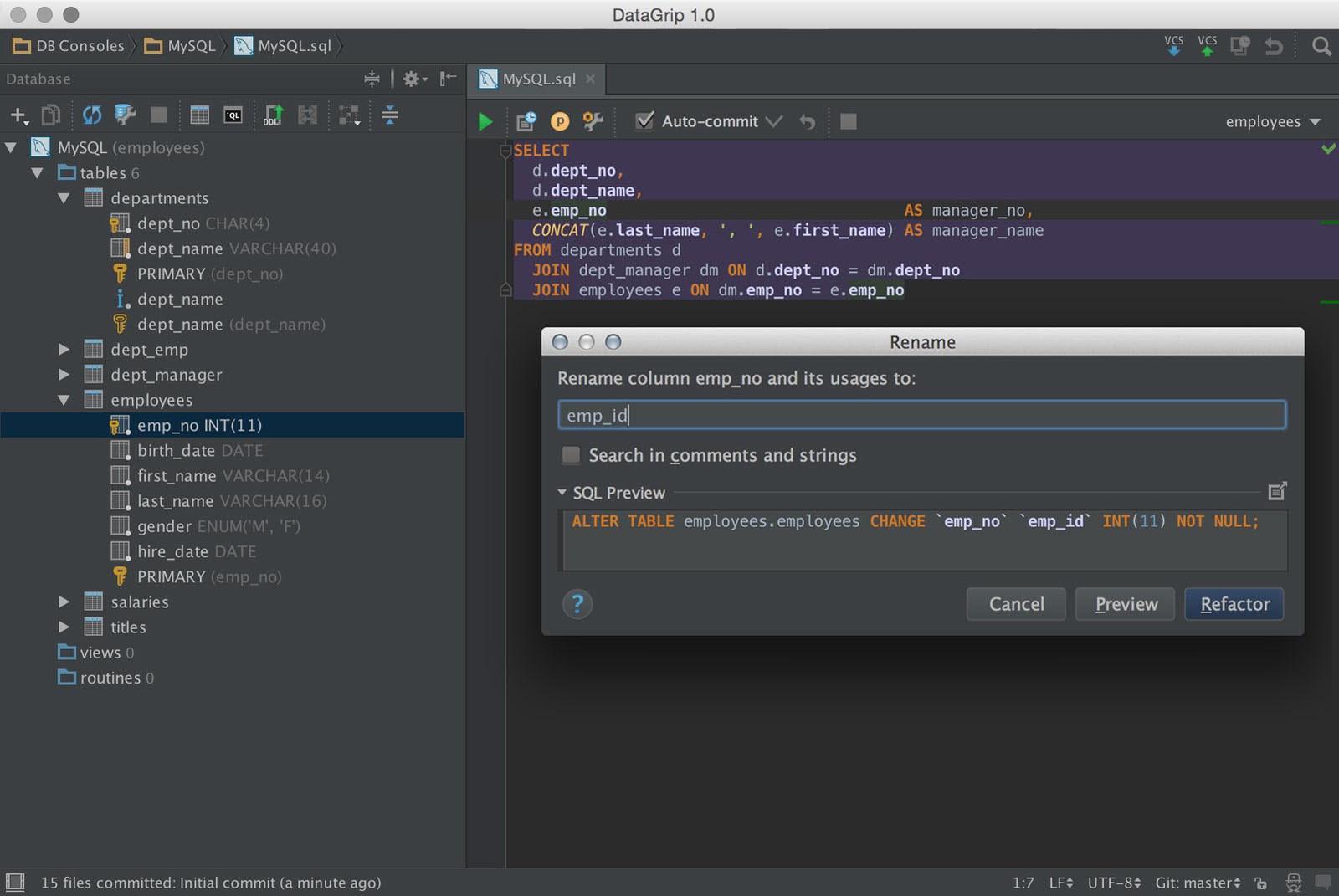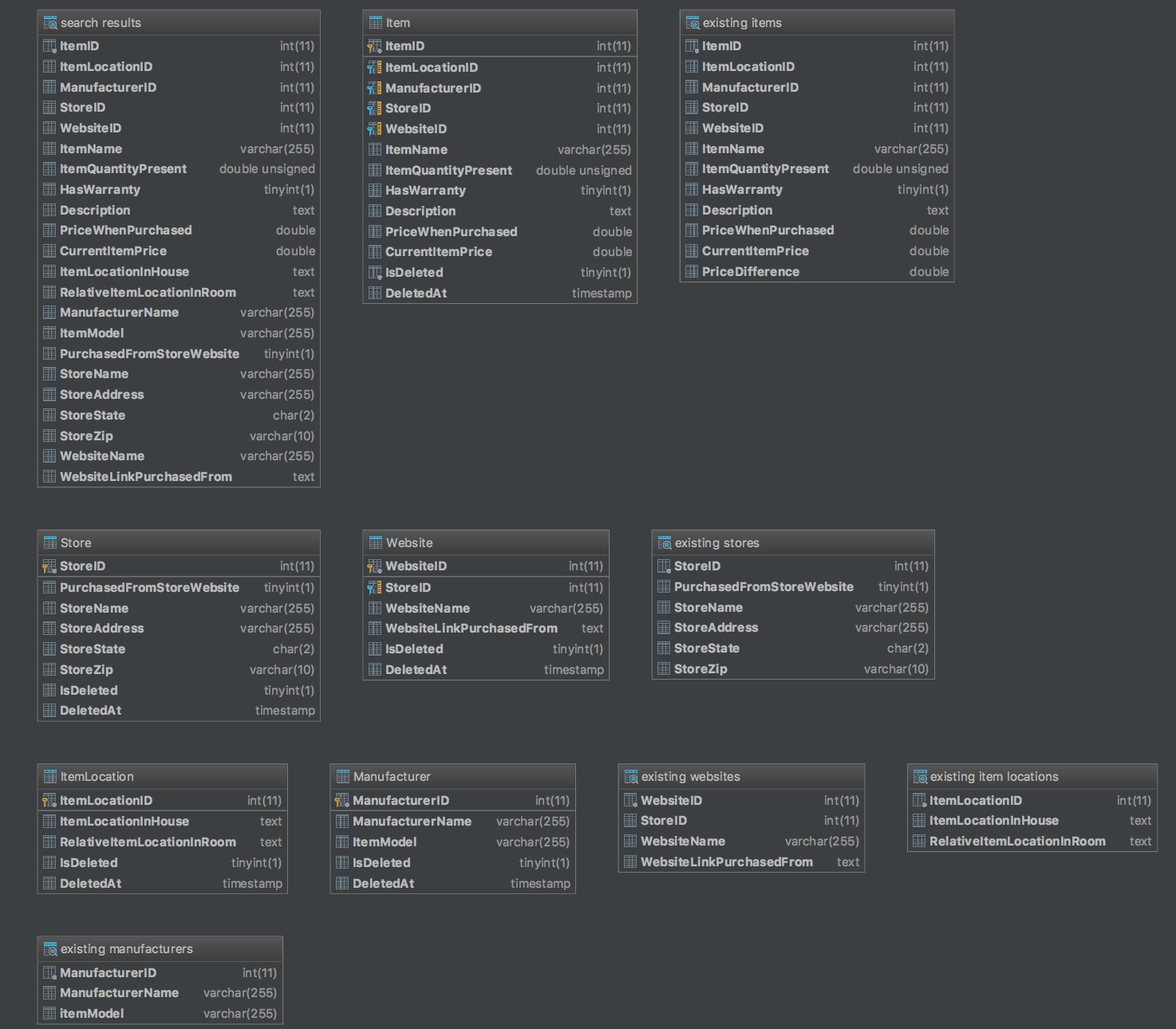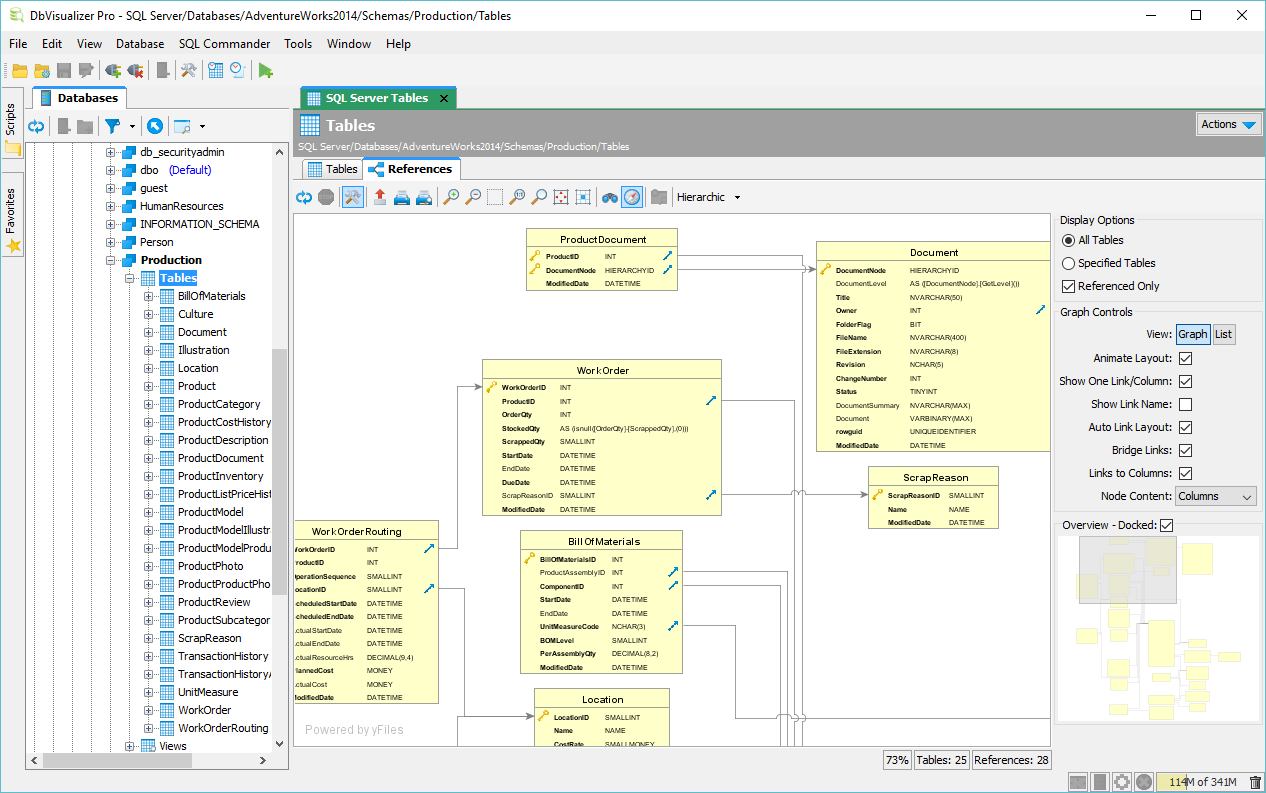

You can select custom columns to include in the diagram to be displayed.

Last Release: Dataedo 7.4.2 (May 16th, 2019)ĭataedo can generate ER diagrams by its simple to use drag and drop feature.
#Datagrip er diagram free#
License: Proprietary, Free (Students and Teachers), Open Source You can find a complete list of features supported by Datastudio for PostgreSQL here. You can reverse engineer an existing database, quick search entities, annotate, compare ER models, forward engineer model in to the database, import database to ER model and generate HTML reports. Data StudioĪqua Data Studio is a database IDE and its ER modeler has bundled some really nice features up its sleeves. It’s surely a long list so don’t be amazed if you don’t find one in this list. Let’s have a look at these tools suggested by the PostgreSQL community. In fact depending on the nature of the requirement, context of use, operating system you are working on, formats you interested to import & export, price you can afford and with some even free, you will definitely find one that suits you well. It has a wide variety of 3rd party tools that support data modeling and diagram generation. PostgreSQL is the world’s most advanced open source database. Well, you can do it with PostgreSQL as well and quite efficiently. Mapping each table, building relationships, implementing constraints and translating them back to business requirements can easily burn you out. Wondering how? Imagine you have been asked to extend database design of an already built e-commerce web system or to design a custom payroll system, making it more complex you have to do it manually. The good news is that most of the DBMS have either this feature built in or have 3rd party tools to support.Īny DBMS lacking this feature these days or no support available from third part tools can hurt its certain audience if not all. It is a handy feature for a DBMS to have. To save time and reduce complexities, any tool generating database diagrams on How a DBMS Handles This?ĭon’t you agree that visuals are a great way to give clarity to complex design, concept, making things self explanatory and easy to comprehend? Let us be honest, it can get tricky and complex, isn’t it? Answer is clarity and simplicity, on paper and in thoughts.
#Datagrip er diagram software#
Modeling and designing a database is a foundation step towards a working database that will back any working software exposed to the outer world. To see the query plan, click Show Visualization, or press Ctrl+Alt+Shift+U.“Data are just summaries of thousands of stories – tell a few of those stories to help make the data meaningful” – Chip & Dan Heathīefore you start playing with a data that is meaningful in a context you make sure it has been collected and filtered by a design that harness the meaningfulness. Right-click an SQL statement, and select Explain Plan.īy default, you see the tree representation of the query in the Plan pane.
#Datagrip er diagram windows#
In the Database Explorer ( View | Tool Windows | Database Explorer), right-click a database object and select Diagrams | Show Visualization. Use the mouse wheel to extra zoom the diagram area within magnifier tool. To use the magnifier tool, keep the Alt key pressed, and hover your mouse pointer over the desired areas of the diagram. You can also use Shift + mouse wheel for zooming. To pan and zoom the diagram, use your touchpad, scroll bars or the mouse wheel for vertical scrolling and Shift + mouse wheel for horizontal scrolling. You can click the Show Visualization icon ( ) to create a diagram that visualizes the query execution.Įxplain Plan (Raw): the result is shown in a table format. DataGrip supports two types of execution plans:Įxplain Plan: the result is shown in a mixed tree and table format on a dedicated Plan tab. Execution plan is a set of steps that were used to access data in a database. If you want to share the created diagram, consider using PNG.Īlso, you can build execution plans.

The UML format is an internal format developed specifically for DataGrip. You can save the generated diagrams in two formats: UML and PNG.


 0 kommentar(er)
0 kommentar(er)
